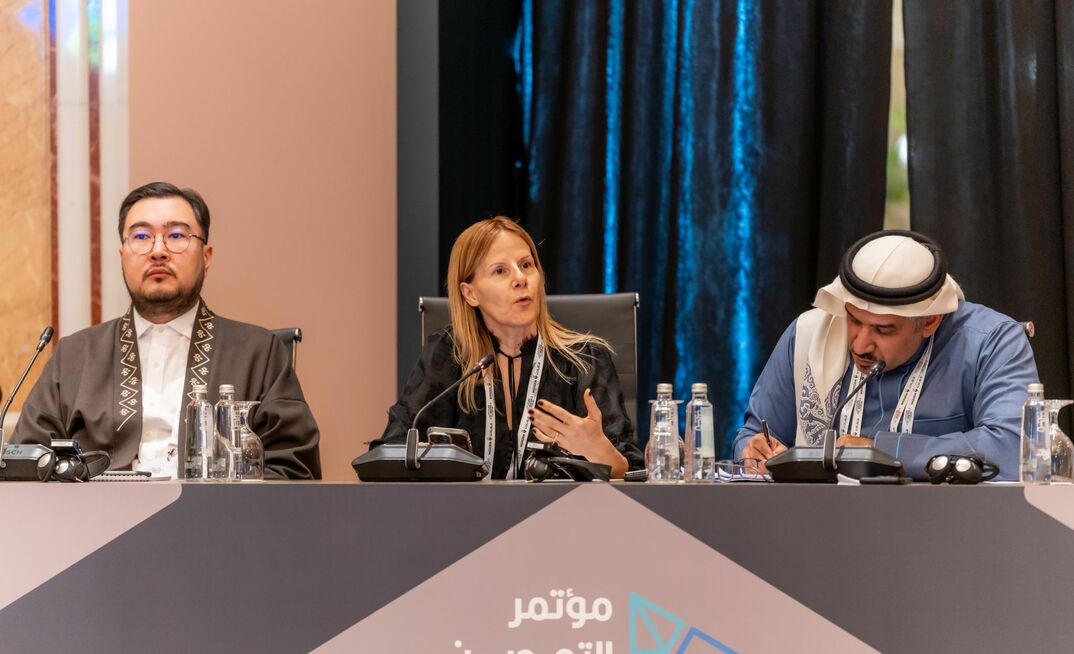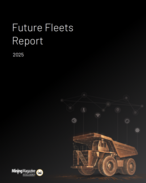In less than a decade, Saudi Arabia has positioned itself as a key mining player despite a relatively modest ore output. In 2016, the country announced its Vision 2030 – a long-term economic and social reform program that has ‘diversification' at its core.
The Kingdom has long relied on oil, which made up approximately 40% of its GDP and 75% of fiscal revenue as of 2022, according to the IMF. Among the sectors pushed in the diversification strategy is mining, another resource industry that could build on Saudi Arabia's oil expertise and potentially foolproof the economy against waning fossil fuel demand.
Three years ago, the country formally introduced the concept of a ‘super region' at its flagship Future Minerals Forum (FMF)
"The globe-trotting delegation has been courting governments and investors in Northern Hemisphere mining strongholds and is currently on its way to Australia," Mining Journal wrote in 2022. "The assemblage includes Minister of Industry and Mineral Resources Bandar Al-Khorayef, vice-minister for Mining Affairs Khaled Al-Mudaifer, Saudi Industrial Development Fund chief executive Ibrahim Saad Al-Mojel, Saudi Geological Survey chief executive Abdullah Al-Shamrani, and senior representatives from the Ministry of Industry and Mineral Resources ecosystem.
YOU MIGHT ALSO LIKE
Saudi's 'super region' concept can be simply defined as a transcontinental hub that unites major mining players in the east, with Saudi Arabia as the convening point. The idea is to leverage the region's collective strengths—Africa's abundant reserves of critical minerals, the Middle East's financial resources and investment expertise, and Central and South Asia's demand and emerging industrial capabilities—to create a perfectly functioning sub-economy.
Offering an alternative
In some ways, the ‘super region' seems to offer an alternative to the increasingly polarised mining powers - i.e. the US and China. Saudi Arabia's sell is its cultural familiarity, existing economic ties and convening power in the region.
At this years' FMF, the ‘super region' was once again high on the agenda, with the Kingdom positioned at the centre.
Speaking to Mining Magazine about the event, Abdulrahman AlBelushi, the Kingdom's assistant deputy minister for Mining Enablement said: "The event is now more of a cause – a movement."
Bringing together the super region was a series of roundtables during the three days, each focusing on a sub-region. Attendees included the leaders of mining firms, financiers and government representatives. At the head, was a Saudi representative chairing the discussion.
Mining Magazine had the exclusive opportunity to sit at the Central Asia Roundtable, where participants included ministers, chief executives of major multinationals, and the director of a notable financing company.
A bold vision
The Super Region idea is undeniably bold. By linking mineral supply chains across continents and coupling them with advanced infrastructure and ESG standards, Saudi Arabia is pitching itself as the connective tissue for a new global economy.
In a separate interview, Leyla Keser Berber, the chairperson of Tethys, a company that calls itself the ‘trans-Eurasian' gateway, said: "FMF is not just a forum; it is a catalytic force driving global stakeholders toward pragmatic and scalable solutions."
The forum's neutrality, she argued, ensures that all regions have an equal voice.
However, the big question during the forum was whether Saudi Arabia's leadership can effectively align the interests of so many players. Central Asia, for instance, is sitting on a wealth of critical minerals, but fragmented efforts and infrastructure challenges have marked its mining ecosystem.
The leader of one financing group at the roundtable suggested that dividing critical infrastructure investments across projects—such as railways tied to specific mining zones—could reduce costs. "If we identify areas for mining and target them [...] we could make investment in infrastructure more feasible," he said.
Central Asia's role
Central Asia's location at the heart of the ‘Middle Corridor' – a trade route connecting China to Europe – makes it a pivotal piece of the super region puzzle. Many countries along the corridor, including Kazakhstan, Uzbekistan and Turkey, are also well endowed with natural resources.
When infrastructure corridors are integrated with mining projects, they not only lower CAPEX and OPEX but also facilitate the establishment of regional mining hubs, ESG-compliant processing facilities, and localised industrial value chains.
Extracting and retaining value from both minerals and the strategic location remains a challenge. A key issue identified at the roundtable was whether the region can successfully collaborate and attract the necessary investment. Speakers highlighted several potential solutions, including developing regional mining hubs and blending public-private financing.
Keser underscored the importance of building what she called "economic corridors" instead of "mere transit routes." She explained, "When infrastructure corridors are integrated with mining projects, they not only lower CAPEX and OPEX but also facilitate the establishment of regional mining hubs, ESG-compliant processing facilities, and localised industrial value chains."
This vision requires significant coordination—not just among Central Asian nations, but also with global players, financiers, and companies willing to invest in infrastructure.
Can FMF deliver?
The FMF has successfully positioned itself as a global platform for action, but yet to be seen is whether this dialogue will translate into results. For Central Asia, this means addressing barriers such as financing gaps and ensuring that the benefits of its mineral wealth are equitably shared across the region.
"Success requires a shift in perspective," said Keser. "Infrastructure corridors like the Middle Corridor must evolve from being mere transit routes into fully realised economic ecosystems. This can be achieved by integrating mining projects with corridor development, creating synergies that enhance regional and global economic stability."
Saudi Arabia's leadership, through the FMF, seeks to provide the blueprint. But whether that blueprint will resonate with and be adopted by the diverse players involved remains an open question.
One thing is clear: the stakes are high, and the ambitions are even higher. Whether the super region can truly deliver on its promise may hinge on how regions like Central Asia rise to the challenge—and whether Saudi Arabia can maintain its pull as the driving force and convener.
























